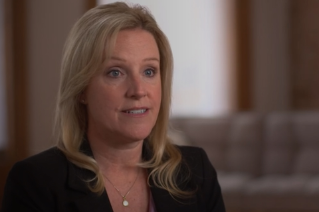EY refers to the global organization, and may refer to one or more, of the member firms of Ernst & Young Global Limited, each of which is a separate legal entity. Ernst & Young Global Limited, a UK company limited by guarantee, does not provide services to clients.

The economy has been booming for nearly a decade, but all good things come to an end.
This is not 2008 and the global economy is not in free-fall, but there is little doubt that the lights have begun to dim after a decade marked by higher growth and good economic conditions. Wherever you look, you hear the same message and see the same data: slowing growth in China, India and Australia; a German economy facing gloomier forecasts; Brexit; and, in the background, a US-China trade discussion that shows no sign of abating. The US Federal Reserve on July 31 even cut interest rates for the first time in more than a decade to hedge against a downturn. Meanwhile, the International Monetary Fund lowered its global economic forecast in July for the fourth time in nine months and called its previous growth projection of 3.5% in 2020 “precarious.”1
Instead, executives can and should focus on how to prepare for the worst. The more resilient a company’s tax function is today, for example, the better prepared and equipped it is to find growth opportunities in a broader slowdown or a downturn. Asking some key questions, like the ones below, is a good place to start:
- When did your tax directors and the functions they oversee start to prepare for the end of the long economic summer?
- What has been done to identify cost savings and to better manage and apportion existing resources?
- What is your tax function’s level of digital preparedness?
- Will you be able to make informed decisions about the level of risk appetite your business wants once a downturn is upon us?
There are two reasons to ask yourself these questions. First, businesses that best anticipate a slowdown are more likely to weather the gathering storm and to position themselves to profit from the upturn that will follow.
The second reason is less immediately visible, but no less important. When faced with negative indicators, governments, just like businesses and individuals, act to protect themselves. From a taxation point of view, that often means finding new ways to protect tax revenue streams and, whenever possible, to expand them.
The bottom line is you need to act. Here are four steps to take now:
1) First, get a handle on precisely how your tax function allocates resources, particularly when it comes to technology.
In the past, businesses filed financial information to the relevant authorities and might have had to wait six months or more before being presented with a bill. Today, tax has no ‘materiality’: wherever you go, tax authorities operate down to the dollar, pound, euro, yen, rupee and yuan. They won’t have 50 people inspecting every document to ensure it is perfect, but they will be doing what the best multinationals do: using big data and artificial intelligence to flag up uncertainties, contradictions, and notable inflection points. Your technology must be just as advanced as the governments’ – in many jurisdictions, tax administrators now have better digital tools than businesses.
2) Second, ensure your tax function is equipped with the right people and procedures. In a world of just-in-time data, in which tax authorities are more likely than not to present tax directors with 10 or 15 questions each week, staff need to have the tax and data skills to answer and provide solutions to these queries.
You are going to be asked some tough questions wherever you pay taxes, so you should also ensure that systems and procedures are in place to handle queries as and when they arrive.
3) Third, explore what specific areas of your business might be subject to risk-based analysis by a given tax authority. Today’s technologies enable tax authorities to pinpoint, with greater precision than ever, when a company is failing to fulfil its tax obligations.
They might challenge a contradiction between your VAT filings and your tax filings, for example, or take a more in-depth look at your sales in a given market. If your business doesn’t prepare for that kind of eventuality, it will immediately be at a disadvantage.
4) Finally, revisit your organization’s tax exposure across all markets. Remember, tax reforms are impacting local tax laws all around the world, so you need to ascertain which rules have changed, which are in the process of changing and which are going to change in the future.
One constant amid the economic uncertainty is the rapid pace of legislative and regulatory change, especially as governments and administrators adapt to a new digital tax landscape. Keeping up with change requires frequent monitoring and, ideally, building productive relationships with key policymakers. It also helps to identify trends; a policy adopted in one county may inspire another to take a similar action, especially if it is viewed favorably by a supranational organization.
All of these steps to take are not just good preparation for an economic slowdown. They are also symptomatic of good, sensible corporate leadership that will set up businesses to thrive in the future.
Summary
It’s important to proactively prepare your tax function to help the business navigate challenging economic conditions.
Related articles
How a future-proof payroll operation should look
EY Global Payroll Operate Leader Sheri Sullivan and colleagues Marjukka Maki-Hokkonen and Olivia Yeoh describe the future of tax and payroll.




